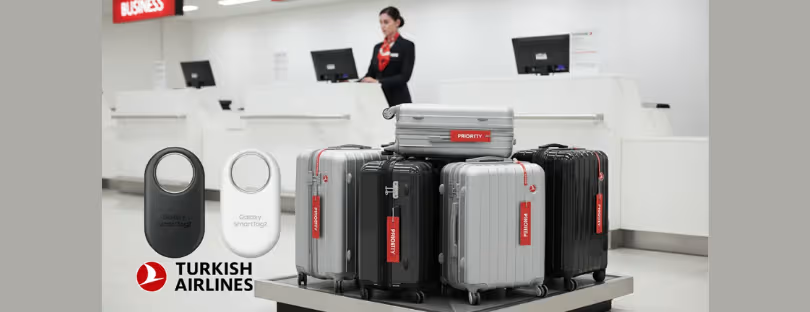
Europe’s New Entry/Exit System: Biometric Borders Replace Passport Stamps
Europe has officially flipped the switch on its long-awaited Entry/Exit System (EES) — a change that will redefine how non-EU travelers move in and out of the Schengen Area’s 29 countries. Gone are the days of border officers stamping passports. From now on, fingerprints and facial scans will do the talking.
The idea is simple but ambitious: automate border checks, enhance security, and reduce waiting times. But can technology really make border control smoother for millions of travelers each year? Let’s unpack what this means for global travelers and the future of European mobility.
A New Era of Biometric Borders
Starting October 12, every non-EU traveler entering the Schengen Zone must register their fingerprints and facial image. The biometric data replaces manual stamps and will be stored securely for three years, according to the European Commission.
The system will automatically track how long travelers stay — a 90-day limit within 180 days for visa-free visitors — and flag potential overstays. It’s a major upgrade over the old paper-based method, which often relied on human judgment and was prone to error.
Children under 12 only need a facial image, and there’s no fee involved. The rollout begins across airports, seaports, and major land borders, with countries like Estonia, Luxembourg, and the Czech Republic leading the charge. Others, including the Netherlands, will phase it in gradually over the coming months.
What Travelers Should Expect
For most travelers — from the UK, US, Canada, Japan, or Australia — the first entry after launch will take the longest. You’ll scan your passport, provide biometrics, and that’s it. On future trips, the system will recognize you through facial recognition, making border crossings faster.
In the UK, biometric collection will happen at exit points like Dover, Folkestone (Eurotunnel), and London’s Eurostar terminals. Once inside the Schengen Area, no further re-registration is needed until you leave.
Officials do warn that early glitches and longer lines are likely during the transition. Border agents can temporarily pause biometric checks if queues grow too long, but overall, the goal is long-term efficiency.
Privacy and Data Protection
EES data will be managed by eu-LISA, the EU’s data systems agency, under strict GDPR rules. Information is encrypted, accessible only to authorized personnel, and used solely for border management. The system doesn’t track travelers’ activities inside the EU — just their entry and exit points.
This privacy-first design aims to ease public concerns after years of debate around data collection and surveillance in travel systems.
Europe’s Move Mirrors a Global Trend
Europe isn’t the first to go biometric — it’s catching up. The United States’ CBP (Customs and Border Protection) has been using facial recognition technology at airports for years under its “Biometric Exit” program. Similarly, Singapore’s Changi Airport and Dubai International have turned facial recognition into an everyday feature for both immigration and boarding.
The EU’s approach, though, is broader in scale — covering land, sea, and air across nearly 30 countries. According to Frontex, the European Border and Coast Guard Agency, the EES could handle over 200 million border crossings annually once fully operational by April 2026.
That makes it one of the largest biometric travel systems in the world — a massive infrastructure shift toward smart border management.
The Next Step: ETIAS on the Horizon
The EES is just one piece of the puzzle. Coming in late 2026, the European Travel Information and Authorization System (ETIAS) will require travelers from visa-free countries to complete online pre-clearance before arrival—similar to the U.S. ESTA system.
Together, EES and ETIAS are set to create a dual-layered system: one that collects data upon entry and another that vets travelers before they even board their flight.
Balancing Security, Speed, and Trust
Europe’s shift to biometric border control is part of a global race toward smarter travel infrastructure. Airports in Asia and North America are already integrating AI-driven screening and seamless identity verification. What sets the EU apart is its focus on interoperability—connecting databases across member states for a unified digital border.
But as with any large-scale rollout, challenges remain: technical glitches, staff training, and traveler education. According to SITA’s 2024 Border Management Report, 74% of global airports plan to implement biometric ID systems by 2026—showing that Europe is not alone in this transformation.
If executed well, the Entry/Exit System could make Europe a model for border modernization — balancing efficiency with strong privacy standards. However, its success will depend on how fast the Schengen countries synchronize their systems and how well travelers adapt to the new normal.
Conclusion: A Digital Border for a Connected World
Europe’s Entry/Exit System isn’t just about replacing passport stamps; it’s about reimagining how borders work in a hyper-connected era. The EU’s ability to combine automation, data protection, and interoperability will determine whether this becomes a benchmark or a bureaucratic burden.
As travelers, the next few months may bring longer queues — but also a glimpse into the future of global travel. Biometric gates are no longer a novelty; they’re becoming the standard. And with EES now live, Europe has officially joined the digital border revolution — one fingerprint and one face scan at a time.











